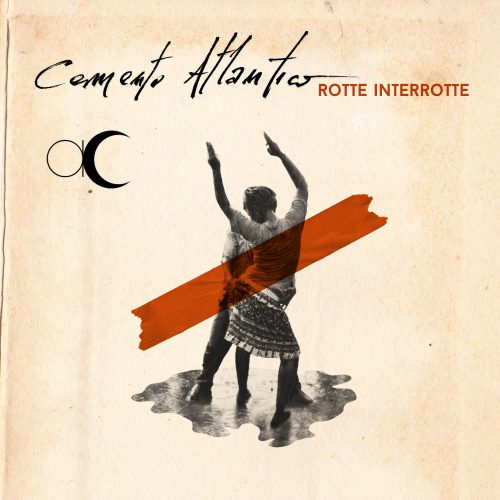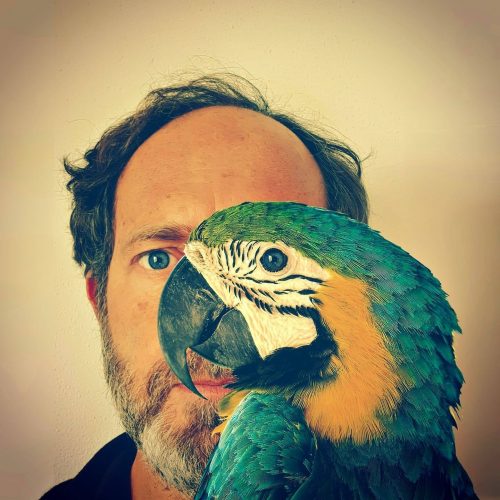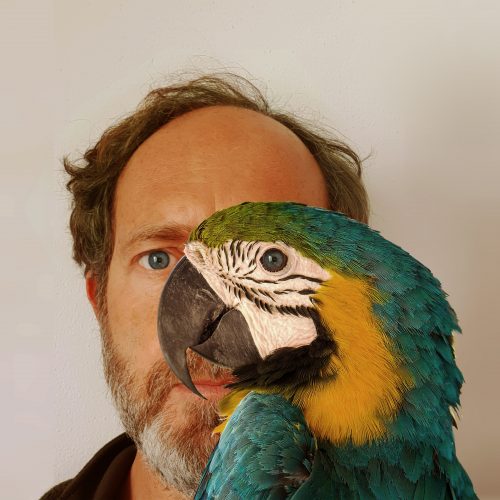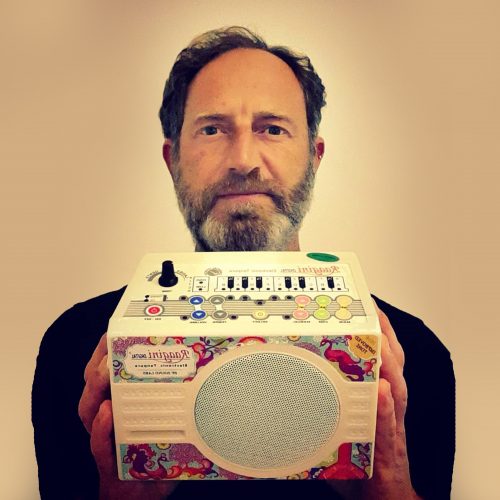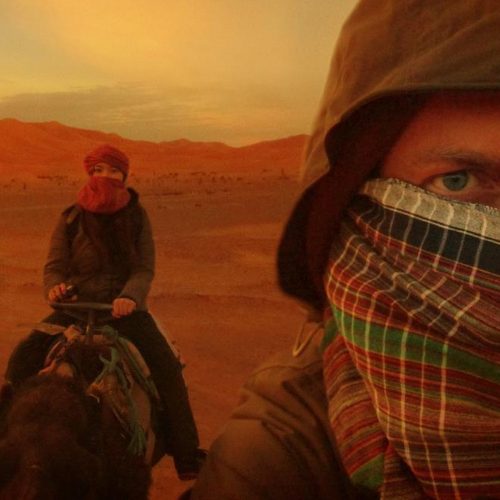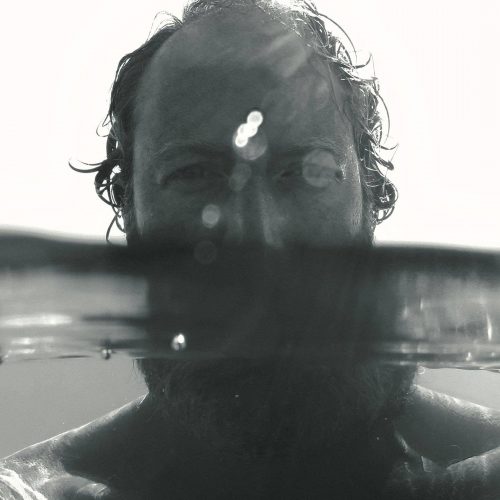Cemento Atlantico – “Rotte Interrotte”

- Cemento Atlantico
- "Rotte Interrotte"
- Bronson Recordings
- 29 July 2021
- Cover Cemento Atlantico “Rotte Interrotte” – artwork: Alessandro “ToffoloMuzik” Zoffoli
- Cemento Atlantico
- Cemento Atlantico
- Cemento Atlantico
- Cemento Atlantico
- Cemento Atlantico
- Cemento Atlantico
Cemento Atlantico’s debut electro-world album, Rotte Interrotte, will be released on July 29th, 2021 by Bronson Recordings
Cemento Atlantico is the first recording project by the Italian DJ/producer Alessandro “ToffoloMuzik” Zoffoli, conceived between 2020 and 2021, in an orphaned silence from wandering and social sharing due to the lockdown in this Pandemic era.
To be released on vinyl, CD and all digital platforms starting from July 29th, 2021 via Bronson Recordings, the album Rotte Interrotte was born from the need to translate the travel experiences of recent years into music: Morocco, Vietnam, Peru, Cambodia, Colombia, India, Guatemala, Myanmar. At the edge of the world.
The sound that fills everyday life is often seen as a foregone background, in reality all its connotations can be explored and ordered to create a melody. Without a shadow of a doubt, the threshold of auditory attention rises by being sent, immersed in cultures and countries other than your own. Among those coordinates, Cemento Atlantico has kidnapped fragments, samples and field recordings from nature, history, road and sacred places. Emotions engraved in the mind with occasional recording means, subsequently manipulated through electronics and rhythmic construction creating a truly unique and contemporary sound and of cultural melting-pot.
Zoffoli has written and produced the record (then mastered by Giovanni Versari), also taking care of its artwork. Cemento Atlantico’s logo is made up of the initials “C” and “A”: “The letter ‘A’ indicates the first Ocean I crossed, the Atlantic one, while the letter” C “- represented by a crescent Moon, with no political or religious reference – symbolizes rebirth, the growth of a project or the advent of a new life in many ancient and modern cultures“. Trip hop, dubstep and chillout are intertwined with world music and ethnic elements, as if the starting point was Bristol, rather than Cesenatico, and the arrival point was all to be soundtracked, all to be explored.
Following the first extract Umm Bulgares, the new singles taken from the album are Beat ’em Bang, Amazonienne, Blade Runner Zero and El congreso de los Fantasmas. More than an album, Rotte Interrotte is a casket of stories set in time with your eyes closed, in the deep belief that through sound you can imagine the world without seeing it.
Track by track
01 – Umm Bulgares
From a narrow alley in Marrakech, I watched the passage of a procession on the Boulevard Mohamed VI: Morocco celebrated the 30th anniversary of the death of Umm Kulthum, an Egyptian singer and actress among the most famous and beloved in the Arab world. A lute-guitar in the street broke the respectful silence accompanying the passage of the huge Umm posters. At the same time, from the opened sun-drenched doors of the Institute Cervantes, a Bulgarian female choir was preparing for the evening concert. The voices fleeing the theater burned the air and intersected to the notes of the procession. It didn’t look like a random meeting of sounds, it looked like a multi-ethnic courtship, or, at least, something magical. In this passage I tried to find that fleeting meeting point between Morocco and Bulgaria.
Field recording:
The lute-guitar belongs to the accompaniment of the musical theme of a Marrakech procession. The choirs are composed of multi-recordings Institute Cervantes in Marrakech during the rehersal of a female Bulgarian choir.
02 – Trung Sisters
At the Thang Long Theater in Hanoi, the floating puppet show (Múa rối nước in Vietnamese) is staged every evening. These are fig wood puppets, manually controlled from the bottom of a swimming pool with a long telescopic handle. That of the floating puppets is a millenary tradition born among the rice fields farmers of the Red River delta. A recurrent story in the shows is that of the Trung sisters: Trac and Nhi. Always considered national heroines, they were the first Vietnamese women, in 40 A.D., to lead a revolution against Chinese domination. Not a word in the show: only live music and invisible actors who, like eels, give life to dozens of puppets from the bottom of the pool. A fluctuating poem, between dances, lights, sounds, loves and duels.
Field recording:
The lute was recorded during an improvisation session in a musical instrument shop in Hanoi.
03 – Amazonienne
Iquitos, a city of 1200 square kilometers in the heart of the Peruvian Amazon, an urban conglomerate built on the arboreal void as a result of logging by Gustave Eiffel. At the end of the 19th century, the French engineer wiped out a huge part of the forest to grow rubber trees. Not being satisfied yet, he built an inhospitable and inaccessible iron house with the remains of the famous Parisian tower, exactly between the edge of the Equator and the bends of the Rio Marañón. Although Eiffel is still remembered today as a disfiguring slaveholder, in this place, willingly or not, among caimans, blind dolphins, mariposarios and sloths, you can breathe a “french-amazonian” cultural mix that has indelibly influenced the habits and customs of the citizens of Iqueteñi, so isolated from everything but so close to the traditions of at least three continents: the America of the Indians, the Africa of the slaves and the Europe of the invaders.
Field recording:
The singing of the Phia, a very common bird in the Amazon rainforest, is the source of the natural carpet and synth base of this song. The percussion was recorded in two different periods and locations, during a street performance in Paris and during a religious parade in the city of Iquitos in Peru. The singing theme comes from a shamanic rite in the Quechua language.
04 – Beat ’em Bang
In Cambodia there is a “Bamboo Train” (“Norry” in Khmer language) and actually it has very little to do with a real train: it’s nothing more than a wooden frame covered with bamboo sticks, connected to two rollers that run on rails and driven by a gasoline engine. Initially used for military operations during the civil war that ravaged the country in the 1980s, today it’s an unusual means of transport between the cities of Phnom Penh and Battambang (350 km). Being a monorail, every time a “train” crosses those Norrys which carry fewer passengers (the maximum is four) it has to be literally disassembled and removed from the track to give way. During that absurd journey I happened to listen, for the only time in a month of travel, to the traditional Cambodian music. In the middle of nowhere, immersed in the plains cloaked in green and dotted with temples.
Field recording:
Many of the sounds re-edited in this piece come from recordings made at Phnom Penh Central Railway Station. The singing theme comes from an old Cambodian film recorded on a local TV in a hostel on the island of Koh Rong.
05 – El congreso de los Fantasmas
In Colombia, at the base of the Andean depression and in the rainshadow effect of the mountains, unfolds an arid tropical forest of 300 square kilometers. This patch of “land”, known as “Desierto de Tatacoa”, is literally divided in half by a road that separates two different colors of soil: on one side stands a fiery red canyon (second only to Sergio Leone’s landscapes), on the other an expanse of gray limestone, populated by rattlesnakes (Tatacoas) and spiders. This last side is dominated by a natural, disturbing formation resembling a “Congress of ghosts”, which is a group of incredibly realistic human-sized stony individuals, hidden under sheets of gray limestone smoothed by the wind. “Un desierto nunca està deshabitado, ojos hechos de roca, alma grises vigilan la sequìa y el poder incivilizado”.
Field recording:
For this song I used four different guitars sampled in Colombia between squares, hostels and old-time TV. The voices were recorded in Bogotà, at the Monasterio Santa Maria de la Epifania.
06 – Blade Runner Zero
There are five continents in the world, and then there is India: a country plunged in extreme contradictions, a sort of huge film set of a chapter zero of Blade Runner. It was the beginning of Kartika (the 8th month of the Hindu calendar) and I soon immersed myself in the magic of Pushkar, a sacred city born from the hands of Brahma. Thar camel drivers sprucing up their “Desert Ships” and wandering to Pushkar for the “Kartik Mela”: 200,000 people, a market of 50,000 camels, stilt walkers and snake charmers. Incredible as it was, all this excitement was just the sideshow of a religious event that comes to life on the nights of full moon on the Ghat: a collective bath in the lake to purify oneself from sin, followed by a ritual with chanting prayers called Maha Aarti (adoration with fire). One of the most intense ceremonies I’ve ever attended.
Field recording:
Voices and percussion of groups of musicians from the deserts of Rajasthan and neighboring Afghanistan were recorded during camel auctions. The outro of Blade Runner Zero was recorded on the last evening of Kartik Mela on the Pushkar Lake Ghat. Maha Aarti is a devotional Hindu ritual. The priest moves clockwise around the effigy of a tray with a lamp, usually with five wicks soaked in camphor and other objects, such as sacred ash, tulasi leaves, kumdum powder, flowers. The culminating moment of the adoration is the one in which camphor is burned, with its bright light and intense perfume. The gesture of the offering of fire takes place by placing the hands on the flames and then bringing them to the face and it’s accompanied by mantras sung and performed in praise of the divinity. Since camphor leaves no residue, its flame symbolizes both the incarnation of divinity and its transcendence of the bodily form.
7 – Black ‘n’ Red
The Garífuna are a mixed ethnic group descended from the indigenous Maya Q’eqchi Indians and black African slaves. They’ve made music a symbol of identity that differentiates them from other indigenous peoples. In November, the “Dia nacional del pueblo Garífuna” is celebrated in the city of Livingston (Guatemala). A 24-hour of ceremonies, dances and songs in the Arawak language to celebrate the anniversary of the landing of the Garífuna on the Caribbean coast from the island of San Vicente (1797). The songs are often in the form of dialogue and the themes are the village life, sowing and harvesting. The frenetic dance to the rhythm of the percussion is called “Punta”: the left foot rotates back and forth, while the right beats the time. This movement causes a sinuous sway of the hips, a symbol of the unstoppable fertility of the Garífuna women who’ll never allow the extinction of their people.
Field recording:
In this track the choirs were recorded in the Evangelical Church of the Nazarene. The title of the a cappella is “Sunn Wadagarati” which in Arawak language means “Thanks to the sea that has given us a new life”. The percussion was recorded during the parades of the “Dia Nacional de pueblo Garifuna”.
08 – El Reino del Condor
The Colca Valley in Peru is home to one of the deepest canyons in the world. On the north side towers the majestic Mismi Nevado, which is the source of the Amazon River. That alone can only make it a sacred place but, if that wasn’t enough, the valley is populated by a peculiar species of Vultur Gryphus, a condor known since the times of the Incas as the son of Inti (King of the Sun). It’s a monogamous bird and when itdies the partner can do nothing but join its companion in the eternity: after hours of vaulting as a funeral ceremonial, it spreads its wings in a vertical flight of despair, as high as it can, and flies until it loses all his strength. Whatever altitude it reaches, it drops to the ground, swallowed up forever by the canyon. His farewell “cry” has always been accompanied by lonesome and faithful flute players standing on the pre-Inca terraces of the canyon.
Field recording:
The choirs belong to the female choir of the Sisters of the Monastery of Santa Catalina in Arequipa, a religious complex of 20,000 square meters, almost a citadel in the city, founded in 1580 by a wealthy widow, Doña María de Guzmán. After passing the Arco De Silencio, you enter the Sala de Profundis, a mortuary where to cry and sing for the deceased nuns whose portraits hang on the walls. In the past, artists were given 24 hours to complete these posthumous portraits, as it was absolutely forbidden to portray living nuns. The flutes were recorded from the pre-Inca terraces of the Colca Canyon during a ritual of religious worship of the Sun King “Inti”.
09 – Bamboo Burma Street
I visited Myanmar in 2019 and fell into the eyes and smiles of its inhabitants, humble, devoted and welcoming people unlike any I’d never met before. Two years later, everything changed: a military coup overthrew the government and arrested Aung San Suu Kyi (Nobel Peace Prize winner and leader of the “National League for Democracy”). The military shut down the access to Internet and mobile phone networks, suppressing all citizens’ rights. Since that day, bloody firefights and reprisals have ensued. My thoughts go out to the wonderful people I’ve been given the honor of meeting. The voices in this song belong to three children I recorded in a street in Yangon. The outro is a pro-democratic protest by fishermen from Inle Lake, dating back to March 2021. What I wish for them is only peace.
Field recording:
The singing and the bamboo wood percussion were recorded in 2019 on the 38th Street in Yangon. The voices belong to three siblings. The choruses in the outro belong to a pro-democratic fishermen’s protest on Lake Inle in 2021.
